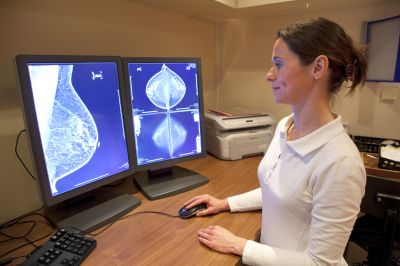Bringing together
the fields of synthetic chemistry and biology forms the perfect union
with which to study biological molecules involved in pathological
processes. It is also uniquely positioned to design drugs according to
biological targets.
Chemical biologists initiated the EU-funded project 'Using
chemical-biology to synthesis and study nuclear receptor proteins'
(CHEMBIONMR) to untangle some of the molecules and parts of molecules
important in breast cancer. The focus was on oestrogen receptors (ORs).
About 75 % of all breast cancers are ER-positive meaning that oestrogen
causes them to grow.
Post-translational modifications (PTMs) of molecules occur after
ribosomes translate the code of messenger RNA into specific amino acid
chains. They play critical roles in the subsequent functions of many
molecules and are important targets for drug therapies. They are also
important to OR function.
Until now, it has been quite challenging to synthesise well-defined
OR constructs containing PTMs. CHEMBIONMR accomplished this task,
successfully introducing PTMs at one end of the OR ligand binding
domain, the region of the OR that binds oestrogen. In order to probe the
effects of the PTM on OR activity, researchers also introduced a
fluorescent probe in a site-specific way.
Investigators employed a number of biophysical techniques
(fluorescence polarisation, circular dichroism and nuclear magnetic
resonance) and molecular dynamics simulations. The results revealed a
PTM (phosphorylation)-dependent but ligand-independent pathway to OR
activation.
This is particularly important in understanding why some forms of
breast cancer are OR-negative and resistant to the drug tamoxifen.
Tamoxifen is an OR antagonist, a molecule resembling oestrogen that
competes with it at the OR ligand binding site. Administration of
tamoxifen may not reduce cancer progression in some cases because OR
activation is dependent on phosphorylation of the receptor, not ligand
binding.
CHEMBIONMR has not only advanced understanding of breast cancer and
mechanisms of activation of OR, providing a therapeutic target. It has
also delivered important tools for studying the PTMs so critical to
cellular signalling and molecular function. Outcomes are expected to
speed the understanding of disease processes and the subsequent
development of novel therapies with benefits for millions worldwide.
 EN
EN  CS
CS DE
DE ES
ES FR
FR HU
HU IT
IT PL
PL PT
PT РУ
РУ SK
SK TR
TR УК
УК AR
AR 中文
中文







